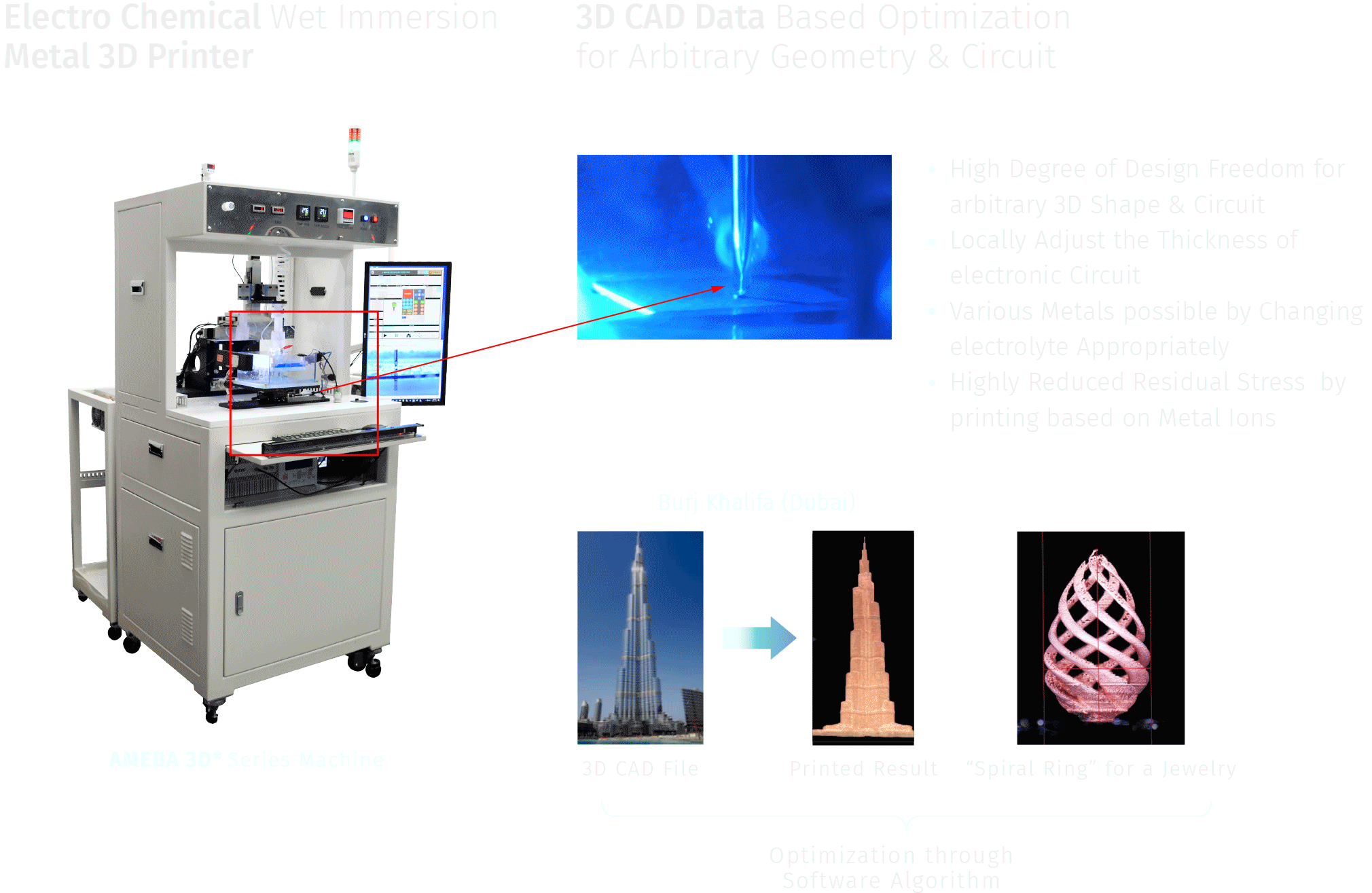3D CAD Data Based
Optimization for Printing
We want to walk with you in the
challenge of how far 3D printed
electronic components can be
shaped through the AMEBA 3D
(S-ECAM for 3D Structure) series of
machines.

01
S-ECAM receives 3D CAD data for an Arbitrary 3D Geometry or Circuit and prints them calculating the Optimal Path and Thickness. S-ECAM allows a high Degree of Freedom for 3D shapes and circuits. It can locally adjust the thickness of electronic circuit and enables printing of various metals through the replacement of electrolytes. Since S-ECAM prints the metal in an ionic state, the residual stress in the manufacturing process can be significantly reduced.

02
Without depending on auxiliary supports, S-ECAM is capable of horizontally and continuously printing a shape with in
verse gradients at of 5~7 times the diameter of the initially printed one. When printing a 3D shape or circuit
on the surface with a slope or curvature, it is possible to print by controlling the electrode module with a 6-axis robot
system.

On the flexible and transparent surface of polymer materials, such as PI (Polyimide), S-ECAM can print 3D shaped Micro
Coil Patterns or electronic circuits. Before printing, a seed layer, mainly Cu, with sufficient adhesion to the polymer ma
terial should be coated with the thickness of 1 ~ 2 ㎛, and after printing the shape on it, the remaining seed layer is re
moved by the subsequent etching process.

Before 3D printing using S-ECAM, the diameter of electrode should be selected according to the analysis of the target
geometry based on 3D CAD file and the requirements of surface roughness and dimension precision. Upon those condi
tions, major operation parameters such as moving speed of electrode and minimum printing thickness should be opti
mized and the total manufacturing time should be evaluated in advance.
